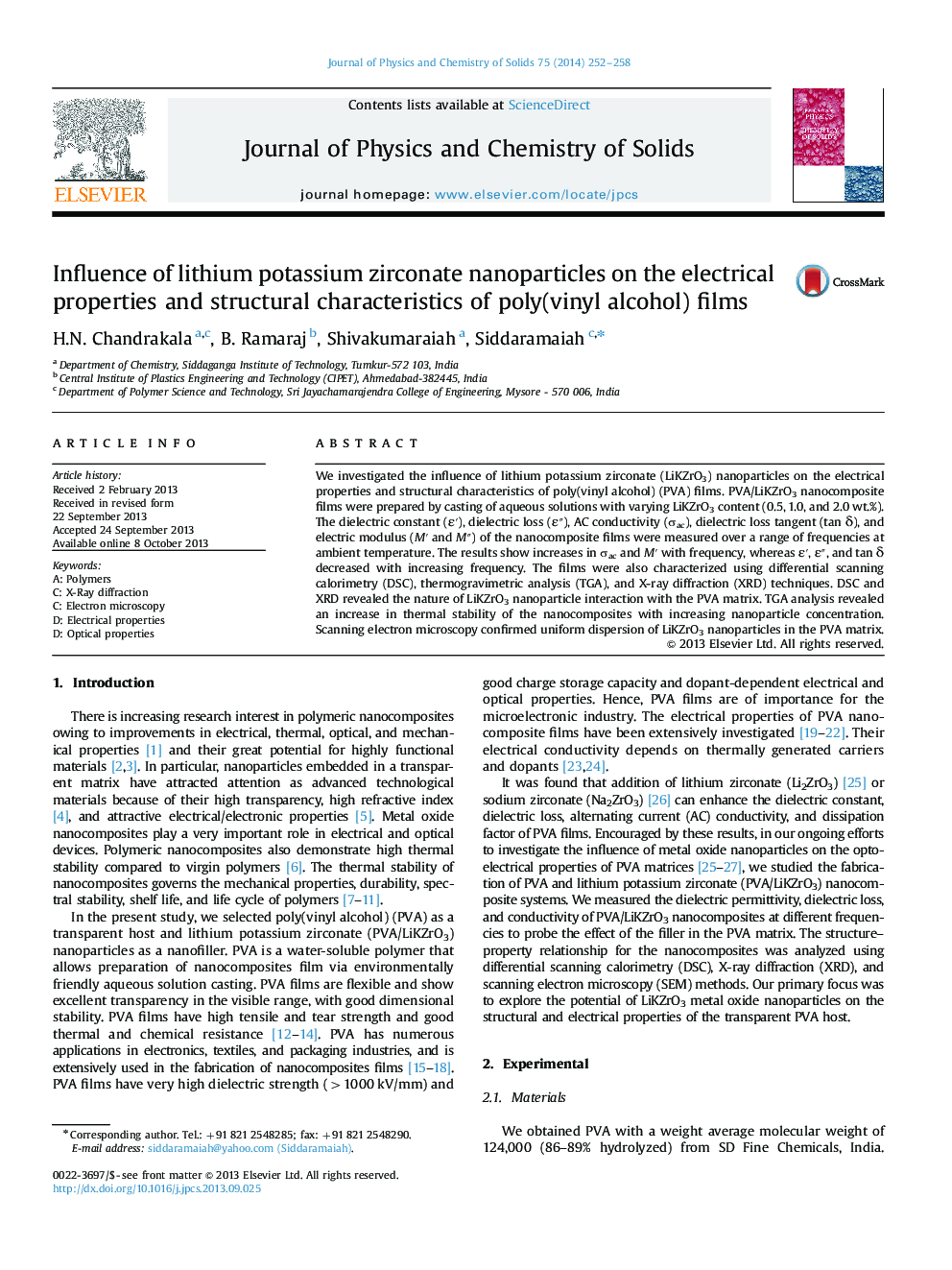| Article ID | Journal | Published Year | Pages | File Type |
|---|---|---|---|---|
| 1516178 | Journal of Physics and Chemistry of Solids | 2014 | 7 Pages |
•A new series of PVA nanocomposite films was prepared via solvent intercalation.•The electrical conductivity and modulus of the composites increase with frequency.•The dielectric constant, dielectric loss, and loss tangent decrease with increasing frequency.•TGA analysis revealed an increase in thermal stability for nanocomposite films.
We investigated the influence of lithium potassium zirconate (LiKZrO3) nanoparticles on the electrical properties and structural characteristics of poly(vinyl alcohol) (PVA) films. PVA/LiKZrO3 nanocomposite films were prepared by casting of aqueous solutions with varying LiKZrO3 content (0.5, 1.0, and 2.0 wt.%). The dielectric constant (ε′), dielectric loss (ε″), AC conductivity (σac), dielectric loss tangent (tan δ), and electric modulus (M′ and M″) of the nanocomposite films were measured over a range of frequencies at ambient temperature. The results show increases in σac and M′ with frequency, whereas ε′, ε″, and tan δ decreased with increasing frequency. The films were also characterized using differential scanning calorimetry (DSC), thermogravimetric analysis (TGA), and X-ray diffraction (XRD) techniques. DSC and XRD revealed the nature of LiKZrO3 nanoparticle interaction with the PVA matrix. TGA analysis revealed an increase in thermal stability of the nanocomposites with increasing nanoparticle concentration. Scanning electron microscopy confirmed uniform dispersion of LiKZrO3 nanoparticles in the PVA matrix.
